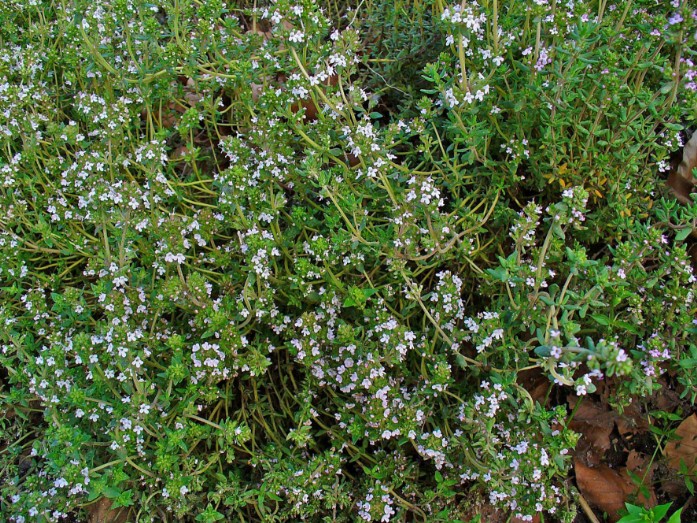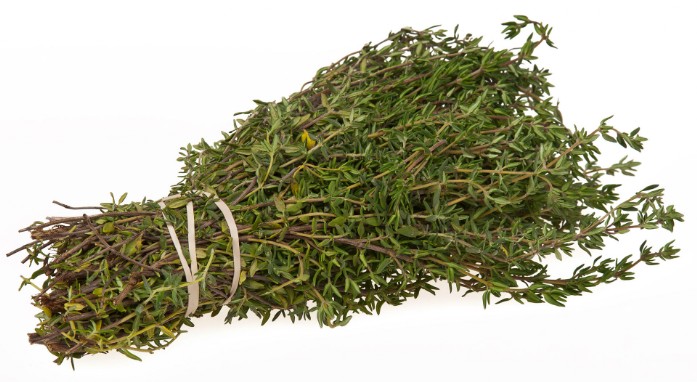Thyme
Herbs A-Z > Know your herbs

Thyme (common, or ‘garden’ thyme) - Thymus vulgaris
This aromatic plant of the mint family, is an evergreen, hardy perennial that can be used in most months of the year, for culinary and medicinal purposes. Its aromatic quality is at its best when the plant is in flower, from May to October. The pink-mauve flowers attract many bees and hoverflies, essential for pollination of other plants in the garden. Thyme is a bushy plant that grows to around 130 – 200cm in height. It is a truly Mediterranean herb and can withstand extended periods of drought.
The name Thyme comes from the Greek word thymon, meaning courage. Thyme was the first herb listed in the Holy Herb Charm, of Mediaeval origin.
Thyme as food
Thyme is used for flavouring many dishes, with both the flowers and the leaves being used. It forms part of the famous French bouquet garni, a bunch of woody herbs wrapped in celery stalks, used as a basis for many country stews involving meat. Thyme is also used to marinate tough meat, to accompany roasting vegetables, and in sauces and soups. In addition it forms the a dominant flavour in the liqueur Benedictine. In Italy the herb is mainly used in its dried form, adding intensity to pasta sauces.

Thyme as medicine
Thyme is often a component in massage oils and has reputed antiseptic, antifungal and antibacterial properties. Thyme has been shown to treat infected toenails, being a natural anti-fungal. It is employed as an antibacterial agent in mouthwashes such as Listerine. Thyme is also used in natural sanitisers. Before the advent of antibiotics, Thyme was used to medicate bandages. It is also used as a tisane to relieve coughs and bronchitis. In fact Thyme may have multiple health benefits, thanks to its very high anti-oxidant properties.
Ancient Egyptians used Thyme in the embalming process, where it presumably halted bacterial degeneration of the body.
Properties of Thyme
Oil of Thyme, which contains 20 - 54% thymol, also contains other volatile compounds useful in medicine. The leaves are one of the richest sources of potassium, iron, calcium and manganese. The herb is also a rich source of important vitamins, Beta-carotene, vitamin A. vitamin K, vitamin E, vitamin C and folic acid.
Notes on the cultivation of Thyme
Thyme requires full sun and is not too fussy about nutrients, preferring well-drained soil, with either alkaline or neutral pH. It is essentially a small shrub and can become dense and woody if not pruned regularly. It is best to cut the plant back quite hard in mid-summer, after which soft new shoots will grow and a second flowering will take place in late summer.
Thyme can be easily propagated from cuttings or layering. It is generally planted in the spring once the soil has warmed up.
